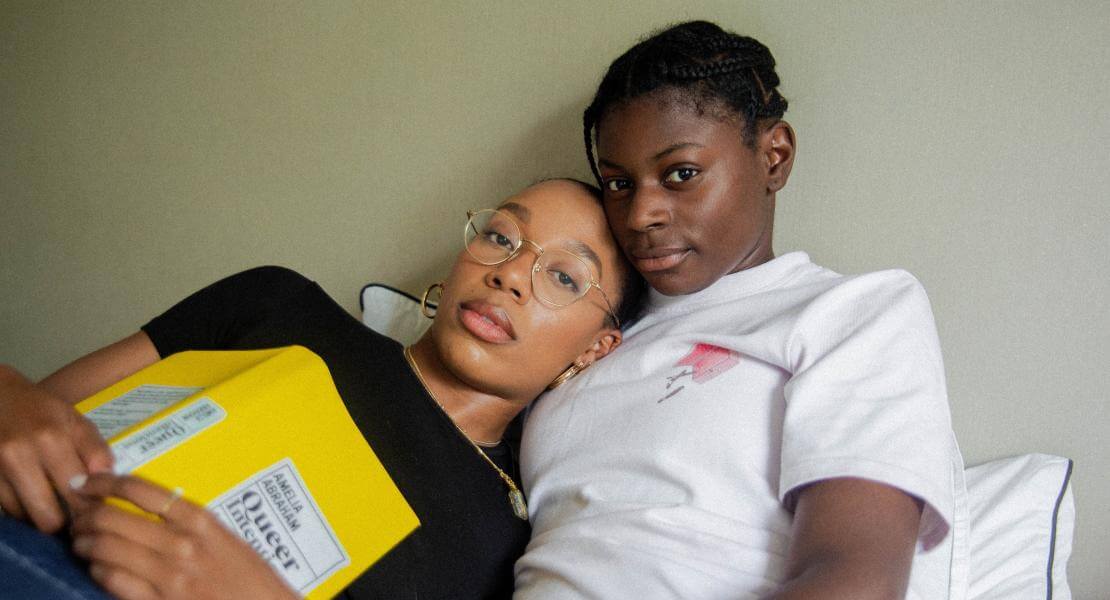|
First of all, here is a glossary1 to help you better understand what we are referring to in this article:
|
Even though Quebec society is increasingly accepting of sexual diversity and gender plurality, LGBTQ+ youth are reportedly experiencing more sexual difficulties than heterosexual and cisgender adolescents. However, the development of sexuality and sexual identity are essential during adolescence. Sexual exploration allows teens to learn more about their sexual preferences and to develop their autonomy and self-esteem2. This exploration, when positive and taking place in a safe and trusting environment, leads to greater sexual well-being. This positive exploration promotes sexual satisfaction, the ability to maintain sexual desire and arousal, and a reduction in sexual distress and risk of violence3.
In order to understand more about the sexuality of young people from all walks of life, our team conducted the PRESAJ (Promoting the well-being and sexual health of individuals and couples) study. A total of 3,000 Quebec adolescents have participated since 2018. The results suggest that LGBTQ+ youth are less satisfied with their sexuality and have more sexual difficulties - erectile, lubrication or orgasm-related. Also, they are more likely to feel inferior or worried about their sexuality.
How is sexuality experienced by LGBTQ+ youth?
Sexual exploration can be challenging for trans, non-binary and non-heterosexual youth. LGBTQ+ youth may experience stigma and develop a negative self-image. This negative image refers to internalized heterosexism and cissexism. This implies that LGBTQ+ youth may come to hate the part of themselves that does not conform to the norms of our society (e.g., being in a heterosexual relationship, being a cisgender person)4. Sexual education, often designed for heterosexual and cisgender people, does not always provide these young individuals with the information needed to explore their sexuality with confidence5. The literature shows that there is a gap, where the sexual well-being of LGBTQ+ is lower than that of heterosexual and cisgender youth2.
How can we understand this gap?
The vast majority of adolescents are insecure about their body image, attraction to others and sexual skills when exploring sex. However, LGBTQ+ youth may experience even more sexual distress. This general insecurity adds an additional stressor to what sexual minorities already experience (e.g., the need to come out, bullying based on their differences). Indeed, they may have experienced more rejection, misunderstanding and thus, negatively anticipate their sexual experiences6.
This anticipation may also distract them during sexual activity, which can lead to difficulties in maintaining arousal (erection/lubrication) or achieving orgasm1. Furthermore, sexual dissatisfaction and distress may be more pronounced among LGBTQ+ youth if they need to explore in secret, hide their sexual orientation or gender identity from those close to them8 to avoid hurtful comments or rejection.
In some cases, sexual education in schools focuses on heterosexual relationships. Messages that present heterosexuality or cis-gender modality as what is normal and legitimate can be detrimental to the development of LGBTQ+ youth. For example, a teenage girl may be asked "when will you get a boyfriend?" assuming that she is attracted to boys. This makes LGBTQ+ youth feel unrepresented or misunderstood. Finally, it may lead them to turn to less realistic sources of information or representations of sexuality for information, such as social media or pornography. In some cases, this may contribute to sexual dissatisfaction as their expectations may not be consistent with reality.
How to move towards a more inclusive sexual well-being?
It is essential to intervene as early as possible to support the sexual well-being of LGBTQ+ adolescents:
- At the societal and school levels, it is vital to develop inclusive sexual education programs for LGBTQ+ youth. There is a need to engage professionals trained in the field of sexology so that they are aware of the current terminology and sensitized to the issues of LGBTQ+ youth. Thus, their reality can be included in the curriculum (e.g., talking about protective methods that can be useful in relationships between individuals with a vulva, such as dental dams).
- At the family level, parents can attend workshops such as the Plur-iels Project, to better understand diversity and open a dialogue with their child. Parents can consult this guide published by the government, or the Gender Creative Kids website.
- On an individual level, there are many websites, hotlines, podcasts, and books that offer good information (see list below). Young people can also contact their school's LGBTQ+ student association or consult organizations such as GRIS-Montreal.
What is the take-away message?
Well-being related to the sexual and gender identity of LGBTQ+ youth is fundamental to their seamless development. While our recent data reflects that the socio-sexual realities of these adolescents are less optimal than those of their heterosexual and cisgender peers, it is essential that concrete actions are put in place to improve them, with a view of inclusion and positive sexuality.
*It should be noted that there were not enough non-binary young people for them to be included in these analyses. Therefore, the results cannot be generalized to these individuals.
Resources to support sexual well-being for adolescents
Website : Sex & U
Podcast: Parole d’ados
Podcast: Vide ton sac Ado
Helpline and website: Tel-Jeunes
Helpline and website: Kids Help Phone
Helpline and website: Tel-Aide
Consultation: Ordre des psychologues du Québec or Ordre des sexologues du Québec
Specialty ressources for the LGBTQ+ community
Website: Interligne
Website: Aide aux Trans du Québec
Website and organisation: Projet10
Community organisation: Jeunesse Lambda
Website and community: AlterHéros
The publication of this article was made possible thanks to our partner, the Interdisciplinary Research Centre on Intimate Relationship Problems and Sexual Abuse (CRIPCAS), and the Fonds de recherche du Québec.
To cite this article: Girouard, A., Dion, J., Blais, M., Paquette, M.-M., & Bergeron S. (2022, April 25). Towards a more inclusive sexual well-being. TRACE Blog. https://natachagodbout.com/en/blog/towards-more-inclusive-sexual-well-b…
- 1Dubuc, D., & FNEEQ-CSN. (2017). LGBTQI2SNBA+ : Les mots de la diversité liée au sexe, au genre et à l’orientation sexuelle.
- 1Adam, F., Géonet, M., Day, J., & De Sutter, P. (2015). Mindfulness skills are associated with female orgasm? Sexual and Relationship Therapy, 30(2), 256–267.
- 2a2bVrangalova, Z., & Savin-Williams, R. C. (2011). Adolescent sexuality and positive well-being: A group-norms approach. Journal of Youth and Adolescence, 40(8), 931–944.
- 3Girouard, A., Dion, J., B?the, B., O’Sullivan, L., & Bergeron, S. (2021). Bullying victimization and sexual wellbeing in sexually active heterosexual, cisgender and sexual/gender minority adolescents: The mediating role of emotion regulation. Journal of youth and adolescence, 50(11), 2136-2150.
- 4Kurki-Kangas, L., Fröjd, S., Haravuori, H., Marttunen, M., & Kaltiala, R. (2019). Associations between involvement in bullying and emotional and behavioral symptoms: are there differences between heterosexual and sexual minority youth? Journal of School Violence, 19(3), 309–322.
- 5Johns, M. M., Poteat, V. P., Horn, S. S., & Kosciw, J. (2019). Strengthening our schools to promote resilience and health among LGBTQ Youth: Emerging evidence and research priorities from the state of LGBTQ youth health and wellbeing symposium. LGBT Health, 6(4), 146–155.
- 6Clear, S. J., Zimmer-Gembeck, M. J., Duffy, A. L., & Barber, B. L. (2020). Internalizing symptoms and loneliness: Direct effects of mindfulness and protection against the negative effects of peer victimization and exclusion. International Journal of Behavioral Development, 44(1), 51–61.
- 8Ybarra, M. L., Rosario, M., Saewyc, E., & Goodenow, C. (2016). Sexual behaviors and partner characteristics by sexual identity among adolescent girls. Journal of Adolescent Health, 58(3), 310–316.











